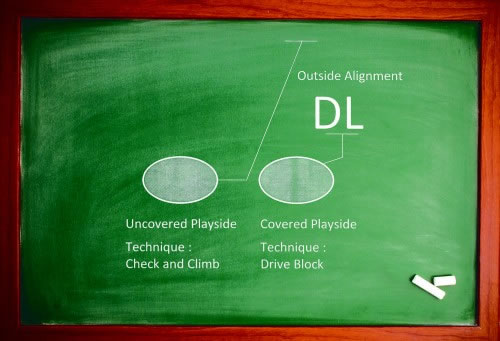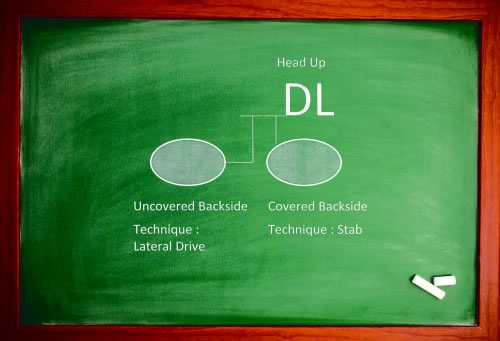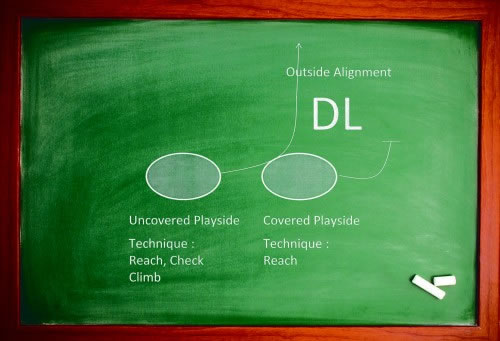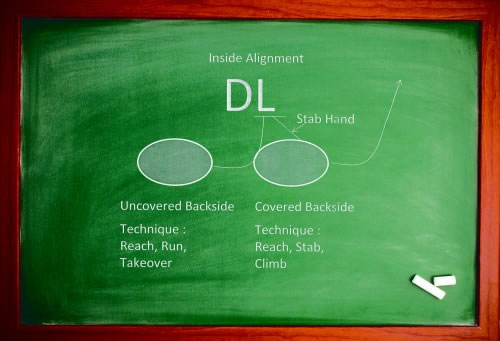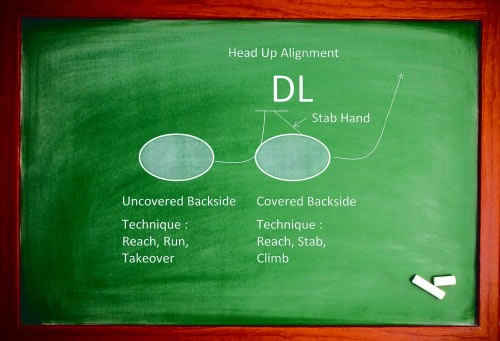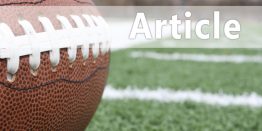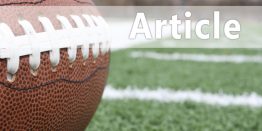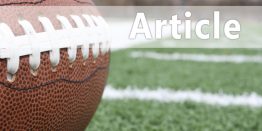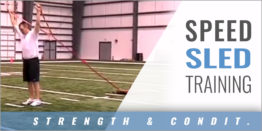| Teaching the Inside and Outside Zone Using
By: Ken Wilmesherr Provided by: American Football Monthly
O-Linemen need to determine their defender’s alignment so they know if they are a covered or uncovered lineman. This topic is about teaching the inside and outside zone using 3-person groups during your individual periods. Before getting into the actual drills, a few things must be understood. The two plays are based on the teaching that in any inside or outside zone play, there are “covered” and “uncovered” linemen. Covered linemen are those that have a defender in an alignment directly across from them. Uncovered linemen do not have a defender aligned across from them. I talk to my players about the different covered alignments a defender can have. The defender can either align to the play side, or side the ball is being run, or back side, the side the ball is being run away from. The uncovered lineman’s universal rule is to work with the next covered lineman to the play side. They have to diagnose what alignment the defender is in on the covered linemen they are working with. Once our players understand these alignments, they then perform the technique best suited to block defenders in the different alignments. I use this table format to organize all the techniques I teach in meetings and practice. The table also gives our players the ability to recall the technique best used to block the defenders aligned across from them. This table explains the four situations we encounter on inside zone:
3-Person Group Once our linemen have an understanding of alignments and the techniques used to block them, we separate into 3-person groups. These groups are not based on position because I feel that every lineman must be able to play every position. The interesting fact with zone blocking schemes is that the techniques are relative to each lineman regardless of their position. Determining Covered/Uncovered We use simple rules to determine if linemen are “covered” or “uncovered”. If there is a defensive lineman across the LOS from a lineman, then he is “covered”. There are two exceptions to this rule – a center with a backside 1 technique and a backside tackle with a 5 technique. If there is no defensive lineman across from a lineman, then he is “uncovered”. Determining Play Side or Back Side Shade We never use the terminology “inside” or “outside” shade when talking about our zone concepts. We feel our zone concepts mandate that we all work together in the direction of the play when exiting the line of scrimmage. Our guys know that, based upon the play direction, they are covered or uncovered either to the play side or back side. For example, if an offensive lineman is covered and the ball is going to the right, if a defender aligns on his right side, then he is covered to the play side. If the defender is aligned on the left, he is covered to the back side. Our uncovered guys work with the next covered lineman to the play side and they are uncovered to the play side or back side based upon the alignment of the defender on the covered lineman. This is important to determine because it dictates what kind of technique our linemen use to block their combinations. Inside Zone to the Right/Left
From our 3-person group, I have two linemen on offense and one on defense. I align the defender to the outside of the lineman on the right or the left based upon the play. I have the offensive linemen get in their proper stance, alignment and split and will have multiple groups going at the same time, working on the same technique. I give the cadence, and on a pre-determined snap count, the offensive linemen execute their zone combination techniques based upon the alignment of the defenders. The covered lineman executes a drive block while the uncovered lineman executes a check and climb technique. He is checking the “near knee” of the defender. If that “near” knee goes up the field, then we climb to the second level for the linebacker. Once the blocks are accomplished and we have a good finish, they quickly rotate clockwise and get back in the line for the next drill. Inside Zone to the Right/Left
The covered lineman, who has the backside shade, executes a stab block while the uncovered lineman executes a lateral drive block. The covered lineman posts up the defender and drives his hand through the inside number of the defender. The uncovered lineman uses lateral footwork and drives through the outside number of the defender. The two linemen combo together in a hip-to-hip fashion for a few yards and finish the blocks. Once finished, they will rotate clockwise and get back on the line. Inside Zone to the Right/Left
We treat any head-up alignment in our zone combinations as a backside shade. Our techniques would be the same as if the defender was truly inside of us. Outside Zone to the Right/Left
The covered lineman executes a reach block while the uncovered lineman executes a reach, check and climb technique. He is checking the “near knee” of the defender. If that “near” knee goes laterally away from him, then he climbs to the second level for the linebacker. He wants to remain patient before his climb and make sure the covered lineman has him reached. Once the blocks are accomplished and we have a good finish, they quickly rotate clockwise and get back on the line for the next drill. Outside Zone to the Right/Left
The covered lineman executes a reach, stab and climb block while the uncovered lineman executes a reach, run and takeover technique. The covered lineman wants to remain patient before climbing and allow the uncovered lineman to take over the block and reach the defender. Once the blocks are accomplished and we have a good finish, they quickly rotate clockwise and get back on the line for the next drill.
The covered lineman executes a reach, stab and climb block while the uncovered lineman executes a reach, run and takeover technique. The covered lineman wants to remain patient before climbing and allow the uncovered lineman to take over the block and reach the defender. If the defender were to go to the play side, then the covered lineman would execute a reach block and the uncovered lineman would climb to the second level. Once the blocks are accomplished and we have a good finish, they quickly rotate clockwise and get back in line for the next drill. About the Author: A frequent contributor to both “American Football Monthly” and “Gridiron Strategies”, Ken Wilmesheer is the offensive line coach at Grossmont College. He has over 30 years of coaching experience on the high school and college level. Wilmesheer previously coached at Southwestern College and holds a Bachelor of Arts degree from Chapman College.
|



